This week on Wild Things, we’re celebrating a big Bronx Zoo milestone: the fiftieth anniversary of the opening of the new Aquatic Birds House. On September 24, 1964, New York Zoological Society members flocked (sorry! had to do it!) to a preview of the new exhibit, which featured herons and spoonbills, rails and stilts, flamingos and ibises, storks and jacanas, avocets and hammerheads, stints and plovers, terns and cormorants, and other birds dependent on wetlands.
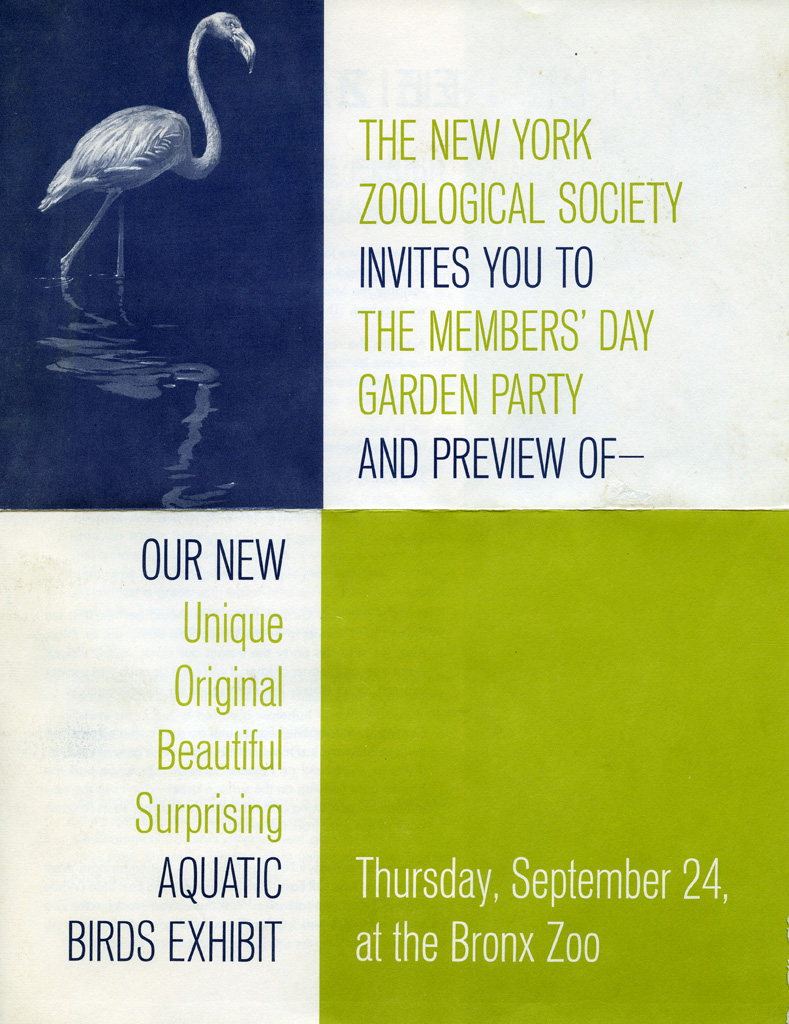
Invitation to 1964 NYZS Members’ Garden Party. WCS Archives Collection 2016 [Link to entire invitation]
The 1964 Aquatic Birds House marked a new era in zoo exhibit technology, led by Bronx Zoo Director William Conway. Planning for and creation of the exhibit was a collaborative effort, involving Conway, who began the project as Curator of Ornithology; the architect Harmon Goldstone, of the firm Goldstone and Dearborn; Ornithology staff members Joseph Bell, Andrew Winnegar, James Bardsley, and Robert Edlington; Operations Superintendent Charles Driscoll; the Society’s brand new Exhibits Department, under the direction of Jerry Johnson; and the City of New York, who provided major funding. [See 1959 planning memo from William Conway to Harmon Goldstone.]
![[need to id staff]](http://www.wcsarchivesblog.org/wp-content/uploads/2014/09/AnimalKingdom_0001_Preparing-ABH-Exhibit_ABH_BZ_07-00-64-e1411402501475.jpg)
Preparing the new Aquatic Birds House, 1964. L to R: (standing) Unknown staff member, Andrew Winnegar, Eric Edler; (kneeling) William Conway, Joe Bell. Image from Animal Kingdom, July/August 1964.
Just as the new Aquatic Birds House reflected innovations in exhibit technology, it also expressed a new vision of the role that zoos could play in educating visitors about wildlife conservation. Where the old building offered a systematic view of birds, the new building “is a product of our own times,” Conway would write in the Sept/Oct 1964 issue of the Society’s magazine Animal Kingdom, “of an emphasis on information excitingly presented and of concern with the almost universal retreat of nature before man’s massive multiplication.” The new Aquatic Birds House was designed around an ecological theme, allowing visitors to see birds in the places they live. As such, its creators constructed the building around such displays as “River Bank,” “Tropical Lagoon,” and “Swamp.” What they wanted, Conway explained, was for visitors to have “not just a recollection of a series of birds in a series of cages, but rather than experience of seeing marvelously adapted creatures exercising those adaptations in typical settings.”
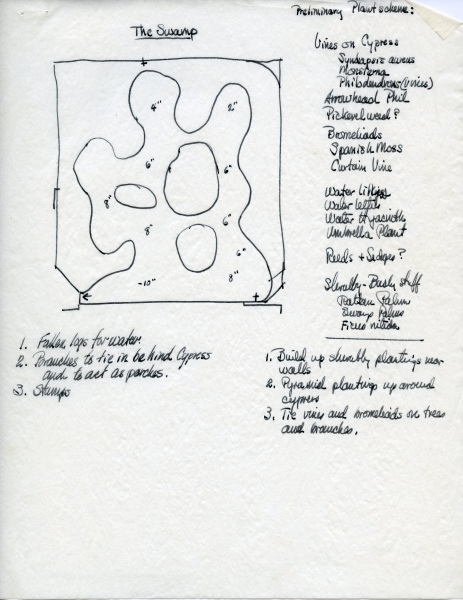
1964 sketch by William Conway showing preliminary plant scheme for The Swamp. WCS Archives Collection 1071
Most important, the exhibit’s creators strove to impress upon visitors the threats facing aquatic birds. As an exhibit label explained, “This building provides generalized reproductions of a few aquatic habitats now especially subject to despoliation by man through drainage and disturbance. If we fail to preserve relatively undisturbed segments of the world’s dwindling wetlands, there will be no aquatic birds.” Conway would press this message again in Animal Kingdom: “In today’s idiom, [the exhibit] offers understanding and enjoyment—but alas, of creatures and settings representative of wonderful wild places now disappearing rapidly and needlessly. Its greatest responsibility will be discharged if it arouses interest in conserving wetlands and waterbirds.”
What do you think about this message? Have you visited the Aquatic Birds House? What do zoo exhibits like the Aquatic Birds House show you about the importance of conservation?

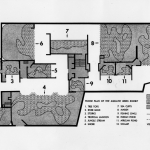
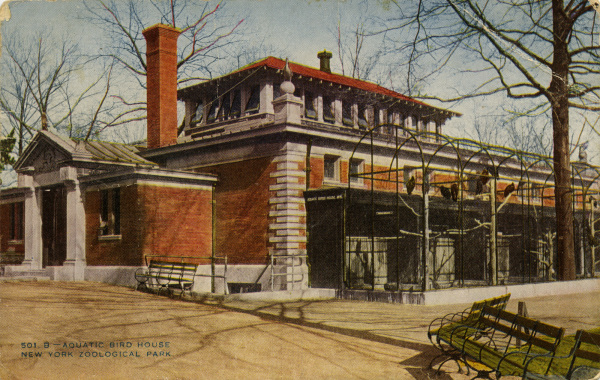
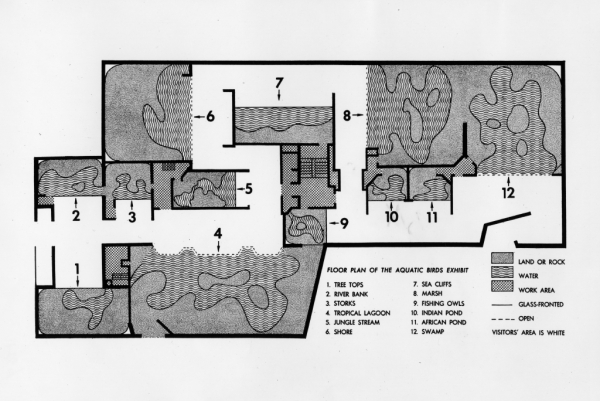
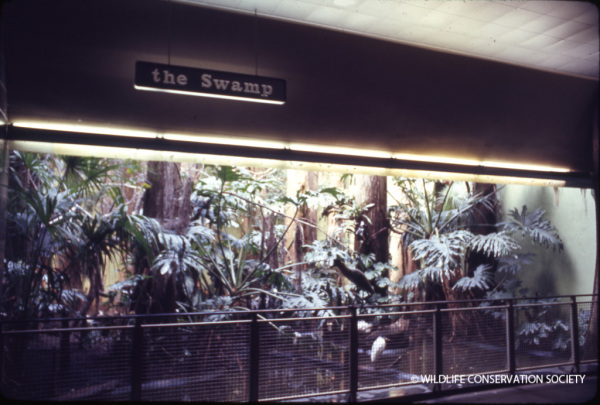
Can anyone tell
Me where I can purchase the image of the men on the ladder? It’s a friends family member.